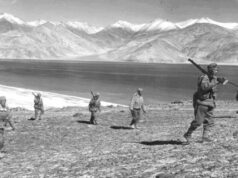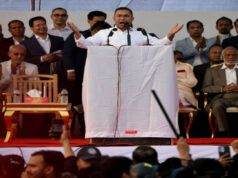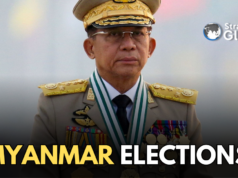Nepal’s President Ram Chandra Poudel, on Sunday, appointed Oli, 71, chairperson of the second largest party in the country’s lower house, the House of Representatives, after he staked claim to the post with the support of 166 MPs including 88 from the Nepali Congress and 78 from his own party—CPN ( UML).
“President Ram Chandra Poudel appointed member of the House of Representatives KP Sharma Oli as Prime Minister of Nepal as per article 76 (2) of Nepal’s constitution,” read the statement issued by the President’s Office on Sunday evening.
The constitution lays down that the President appoints a member of the House of Representatives as prime minister, who can secure a majority with support from two or more parties.
The newly appointed prime minister and his Cabinet ministers are scheduled to take the oath of office on Monday morning. On Friday, President Paudel called on the Lower House members to claim leadership of a coalition government by Sunday evening.
The minimum number needed to form a government is 138 in the 275-strong House of Representatives.
It is Oli’s fourth stint as Prime Minister, he assumed that office for the first time in October 2015. The first government led by him lasted till August 2016. Then, Oli headed the government from February 2018 to May 2021 and from May 2021 to July 2021.
After the parliamentary elections in November 2022 gave a fractured mandate, the country’s first and second largest parties—Nepali Congress and CPN (UML), could not form the government.
Then, Puspa Kamal Dahal ‘Prachanda’ chairperson of the third largest party—CPN (Maoist Centre), became the Prime Minister thrice within a short span of one and half years, either with the backing of the Nepali Congress or the UML.
On July 1, the country’s two largest parties reached an agreement to form a ‘National Consensus Government’ (to be first led by Oli) that paved the way for the collapse of the Prachanda-led government.
Prachanda’s effort to get a vote of confidence from the lower house on Friday failed as he secured only 63 votes from the 275-strong House of Representatives.
It’s unusual for two of the largest parties to come together, more so when they represent ideologically opposite poles. But Nepal has a history of major parties coming together to form either a national consensus government or a majority government.
The last time the NC and UML came together was in 2013 after elections to the second constituent assembly.
Nepal-India relations have been strained in the past when Oli was prime minister. Under his leadership in 2015-16, Nepal brought China, geopolitical rival of India, closer to Nepal as he signed many agreements with China including Transit and Transport Agreement.
It was however done in response to an alleged trade blockade by India showing displeasure over Nepal’s new constitution promulgated in 2015.
In May 2020, the cabinet led by Oli issued a new administrative map of the country putting Limpiyadhura, Lipulekh and Kalapani, all territories disputed with India, within Nepal’s borders. Such harsh measures were taken by the Oli-led government in response to India issuing its own political map by incorporating these disputed regions within its border.
Nepal’s parliament later unanimously endorsed the second amendment to the constitution, to update the country’s new political map in the national emblem.
However, Vijaya Kant Karna, Nepal’s former ambassador to Denmark and a foreign policy commentator, told Stratnewsglobal that the presence of the Nepali Congress in the government could work as a stabilising factor in relations with India.
“I think Oli will also make an effort to keep relations with India stable unlike in the past,” he said. “India on the other hand, has the ability to maintain working relations with any government irrespective of who leads it.”




